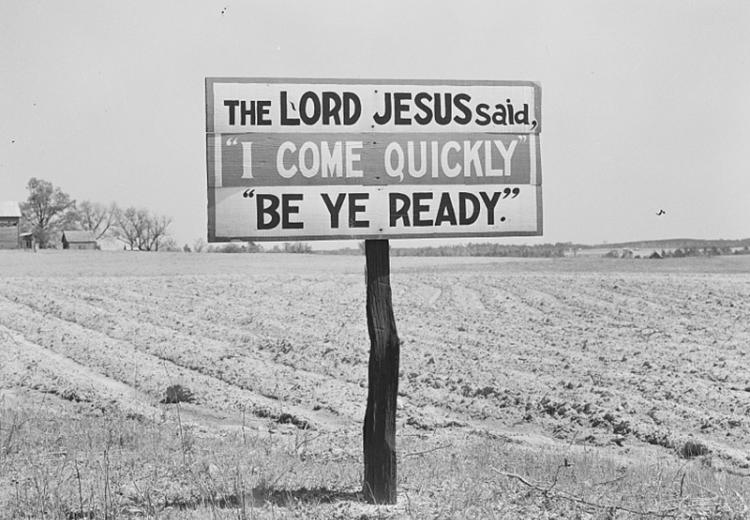Flannery O’Connor’s “A Good Man is Hard to Find”: Who's the Real Misfit?

The mood of this 1940’s Georgia highway picture is a sense of foreboding that reflects the spirit of the Flannery O’Connor story "A Good Man is Hard to Find."
"The novelist with Christian concerns will find in modern life distortions which are repugnant to him, and his problem will be to make them appear as distortions to an audience which is used to seeing them as natural; and he may be forced to take ever more violent means to get his vision across to this hostile audience. When you can assume that your audience holds the same beliefs you do, you can relax a little and use more normal ways of talking to it; when you have to assume that it does not, then you have to make your vision apparent by shock — to the hard of hearing you shout, and for the blind you draw large and startling figures."
— Flannery O'Connor [From the Flannery O'Connor Special Collection].
Known as both a Southern and a Catholic writer, Flannery O'Connor (1925-1964) wrote stories that are hard to forget. Whether for their humor, brilliant characterization, local color, or shocking plots, Flannery O'Connor's short stories, "in which the voices of displaced persons affirm the grace of God in the grotesqueries of the world," (Georgia Women of Achievement, via Internet Public Library) continue to disturb and resonate. As O'Connor said herself, her stories "make [her] vision apparent by shock."
One of O'Connor's most widely read stories, "A Good Man is Hard to Find" (written in 1953), without a doubt is also her most shocking. Yet it is through the story's disturbing ending that O'Connor raises fundamental questions about good and evil, morality and immorality, faith and doubt, and the particularly Southern "binaries" of black and white and Southern history and progress.
In this lesson, students will explore these dichotomies—and challenge them—while closely reading and analyzing "A Good Man is Hard to Find." In the course of studying this particular O'Connor short story, students will learn as well about the 1950s South, including evolving transportation in the U.S.-transportation fueled by the popularity of the family car and the development of the U.S. highway system; the landmark Brown v. Board of Education Supreme Court case that helped divide the "Old South" from the "New South"; and the literary genre known as the "Southern Gothic," or "Southern Grotesque."
Guiding Questions
How does Flannery O'Connor describe the cultural and physical landscape of the South?
What are the characteristics of the literary genre known as "Southern Gothic"?
What are the key themes Flannery O'Connor explores in "A Good Man is Hard to Find"?
Learning Objectives
Examine the historical and social context of Flannery O'Connor's short stories.
Conceptualize the literary genre known as the "Southern Gothic" or "Southern Grotesque."
Construct an original essay based on a close reading of a short story.
